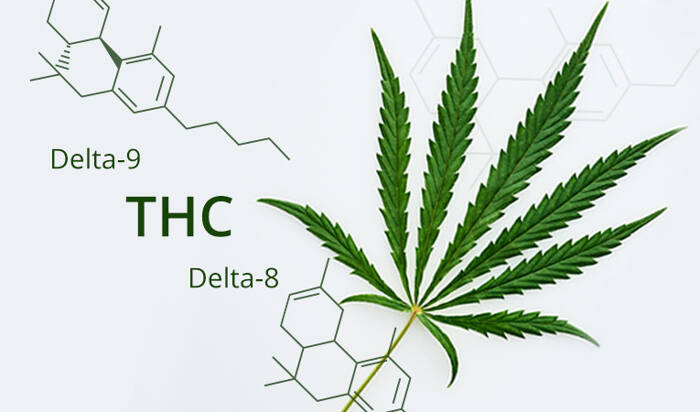Delta-8 THC, Is Drawing the Spotlight
Some 48 percent of consumers surveyed by New Frontier Data last year had heard of THC, the psychoactive cannabinoid in cannabis — a.k.a. Delta-9 — that gets you high.
And that familiarity is no surprise: THC, short for tetrahydrocannabinol, has been a staple of the college experience for at least 60 years and today is the basis for a booming industry in states legal for recreational pot. “Delta-9 is the one [cannabinoid] we all know and love,” declares John Ramsay, co-founder and CEO of Infinite CBD, based in Denver. “That’s the one we’ve been talking about since the ’60s and ’70s, and consuming for thousands of years, in actuality.”
Now, however, Delta-9’s chemical cousin, Delta-8, is also drawing attention. “Delta-8 has just hit everybody by storm,” Ramsay explained in a recent interview. Reason: “Delta-8 is a THC [a cannabinoid separate from Delta-9] that we can legally ship all over the nation because it falls under the 2018 Farm Bill act.”
And how is that possible? Because while Delta-9 is a pure cannabis derivative illegal under federal law, Delta-8 is derived from industrial hemp, which was legalized under the Farm Bill.
That means that consumption of Delta-8 causes a “legal” high. And it is a high even though it derives from hemp, which, again, is legal (and is the basis for legal CBD, or cannabidiol, products.
“I don’t want to fudge that; [Delta-8] definitely gives people a euphoria,” Ramsay said. Yet Delta-8’s high is different because it’s softer. “[Delta-8] is not the mental high that gives you the giggles or makes you irresponsible. It’s a whole different kind of high,” from Delta-9, Ramsay said.
As the Dallas Observer newspaper wrote in December, “The [Delta-8] benefit is a very clear-headed, engaged high, without anxiety of fogginess; this is ideal for Delta-9 THC patients who want the benefits without being stoned.” The speaker was Nina Than, sales director for Denex Hemp Co.
One drawback of this “legal high” however is that it doesn’t apply across the board, since the Drug Enforcement Agency (DEA) bans synthetic THC of any kind. What makes all this murkier still is that the definition of “synthetic” isn’t itself crystal clear.
Despite these issues, the attention being directed toward Delta-8 reflects the new, and growing, interest in multiple “minor” cannabinoids. Sure, everyone’s heard (86 percent recognition) of CBD because of its apparent success in helping consumers battle anxiety, stress, even PTSD.
But CBD products are having to make room for other minor cannabinoids being researched. They make up an alphabet soup: CBN, CBG, CBC, THCV, CBDA – and on and on. Ramsay says there are 111 known cannabinoids; other sources cite 120-plus)
What’s important here is not their numbers but their benefits: CBN is figuring into sleep aids; CBDs with Elderberry are being looked at for possible increased immunity; and CBG is being linked to anti-nausea, anti-microbial and anti-inflammatory benefits – possibly aiding in battles against glaucoma, inflammatory bowel disease, even cancer.
“You’re going to see minor cannabinoids play a role in creating what we like to call functional products,” predicted Ramsay, who is about to launch two Delta-8 gummies products to augment his CBD lines.
And what happens when these minor cannabinoids are combined? “There have been tons of studies that have shown that all the cannabinoids mixed together is the best way to consume the plant,” Ramsay said. “You get all those minor cannabinoids and terpenes. And terpenes – essential oils – play a whole other role.”
In terms of what to look out for in 2021, described in that New Frontier Data report, “A handful of minor cannabinoids are already reaching cannabis-informed consumers,” the study says.
“With overproduction and an associated drop in prices of CBD, some producers have turned to other minor cannabinoids,” the report states. “Many industry operators find minor cannabinoids particularly compelling, as they represent an untapped medical arsenal, with early research suggesting [that] minor cannabinoids have as much or more potential in nutrition and wellness as THC and CBD offer.”

